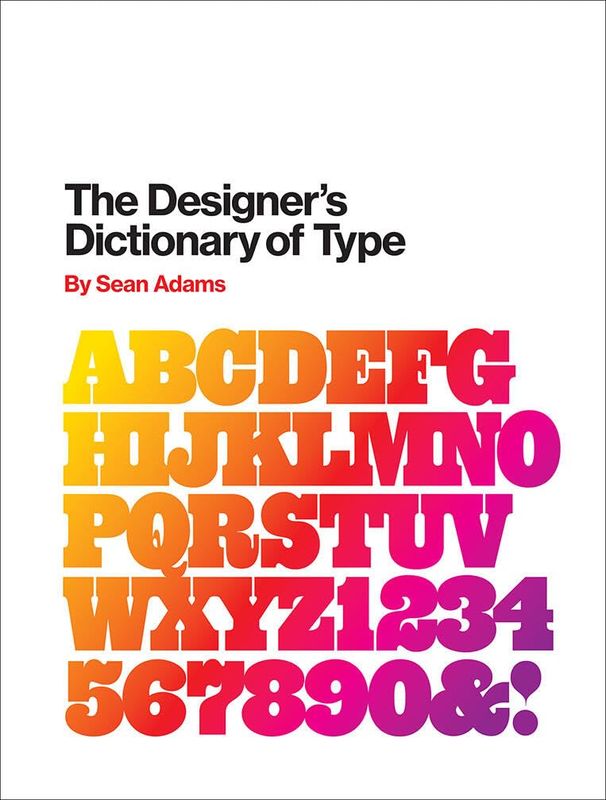Grid Systems in Graphic Design Book Summary
By Josef Müller-Brockmann
Published: 1996
Book Review of Grid Systems in Graphic Design
From a professional for professionals, here is the definitive word on using grid systems in graphic design since 1981.
Book Overview of Grid Systems in Graphic Design
About the Book Author
Josef Müller-Brockmann
Josef Müller-Brockmann was a Swiss graphic designer, teacher, and a key figure in the field of modern design. He is best known for his influential work in the Swiss Style of design, which emphasizes clarity, grid-based layouts, and a strong use of typography. His notable works include the iconic poster designs for concerts and festivals, as well as his books such as "Grid Systems in Graphic Design," which has become a classic reference for designers worldwide. Müller-Brockmann's writing style is characterized by its precision and clarity, reflecting the principles of modernist design.
Book Details
Key information about the book.
- Authors
- Josef Müller-Brockmann
- Published
- January 1996
- Publisher
- Verlag Niggli AG
- ISBN
- N/A
- Language
- English
- Pages
- 184
- Genres
- Graphic DesignDesign
Purchase Options
Support local bookstores: BookShop gives a portion of each sale to independent bookshops!
Similar books you might like →
Identity Designed Book Summary
In 'Identity Designed,' David Airey takes readers on a captivating journey through the art and science of branding. This visually stunning book showcases a rich collection of global identities, revealing the strategies behind their creation. Airey delves into the psychological impact of design, urging readers to think deeply about how branding shapes perceptions. With insightful case studies and expert commentary, it sparks curiosity about the essence of identity in modern culture. Perfect for designers and entrepreneurs alike, this book invites you to explore the power of visual storytelling in building a brand.
A Book Apart: On web typography - Jason Santa Maria Book Summary
In 'A Book Apart: On Web Typography,' Jason Santa Maria unveils the critical art of type on the web, exploring how typefaces can shape user experience. Delve into the interplay between design and readability, and discover how thoughtful typography can enhance digital communication. With practical insights and inspiring examples, Santa Maria challenges conventional wisdom and encourages designers to push the boundaries of creativity. This book is not just a manual; it's an invitation to rethink how we present words online. Whether you're a seasoned designer or a curious newcomer, this exploration of typography will transform your understanding of web aesthetics.
The Designer's Dictionary of Type Book Summary
Delve into the fascinating world of typography with 'The Designer's Dictionary of Type' by Sean Adams. This comprehensive guide unravels the intricacies of typefaces, revealing their unique personalities and historical contexts. Each entry offers insights that inspire creativity and enhance design skills, making it an essential reference for both novice and seasoned designers. With stunning visual examples, the book encourages a deeper appreciation for the art and science of type. Discover how the right type can transform your work and captivate your audience!
Designing with Type, 5th Edition Book Summary
Dive into the art and science of typography with 'Designing with Type, 5th Edition'. This essential guide unravels the intricacies of typefaces, spacing, and layout, empowering designers to elevate their work. Through a rich blend of practical insights and illustrative examples, Craig and Scala reveal how type influences design perception. Whether you’re a novice or a seasoned professional, this book opens your eyes to the transformative power of typography. Discover how to shape your visual communication and captivate your audience with every word.
The Design of Everyday Things Book Summary
In 'The Design of Everyday Things', Don Norman reveals the hidden principles behind effective design that shapes our everyday interactions. He explores the psychological underpinnings of how we perceive and interact with objects, highlighting the importance of usability and user-centered design. Through captivating examples, Norman illustrates how poor design can lead to frustration, while thoughtful design enhances our experience. This book challenges readers to rethink the functionality of everyday items, making them consider the design choices behind the objects they encounter. Ultimately, it invites us to demand better designs that cater to our needs, making the mundane extraordinary.
100 Things Every Designer Needs to Know about People Book Summary
In '100 Things Every Designer Needs to Know about People,' Susan Weinschenk unveils essential psychological principles that can enhance design effectiveness. With insights drawn from cognitive science, the book explores how people perceive, interact with, and make decisions about design. From the nuances of color perception to the importance of empathy in user experience, Weinschenk offers practical strategies for designers. Each principle is supported by fascinating research, making the content both informative and engaging. This enlightening guide equips designers to create more intuitive and user-friendly experiences, sparking curiosity about the intersection of psychology and design.
Sketching User Experiences: Getting the Design Right and the Right Design Book Summary
No summary available
Gamification by Design Book Summary
In 'Gamification by Design', the authors explore the art and science of integrating game mechanics into non-game contexts to enhance user engagement and motivation. They uncover the psychology behind what makes games addictive and how these principles can be applied to real-world scenarios. Through practical case studies and actionable frameworks, the book reveals how gamification can be a catalyst for innovation and user loyalty. Are you ready to unlock the secrets of game mechanics and transform your projects? Dive into this insightful read to discover how to design experiences that captivate and retain users!
Showing 8 of 30 similar books
Similar Book Recommendations →

Kevin Rose's Book Recommendations
Kevin Rose is a notable entrepreneur and technology investor, best known for founding Digg, a pioneering social news website that significantly influenced online content sharing. Although not primarily recognized for literary contributions, Rose has impacted digital media and online culture, which are recurring themes in contemporary literature on technology. His insights and experiences have been featured in various tech journals and books, enriching discussions on innovation and digital entrepreneurship. Rose also co-hosted the popular podcast "The Random Show" with Tim Ferriss, where he shares his thoughts on technology, health, and productivity. Through his ventures and public speaking, Rose continues to inspire narratives around the digital revolution and startup culture.

Dustin Moskovitz's Book Recommendations
Dustin Moskovitz is an American entrepreneur and co-founder of the social networking website Facebook, which has become one of the most influential platforms globally. He later co-founded Asana, a popular work management tool designed to help teams orchestrate their work, from daily tasks to strategic initiatives. While Moskovitz is not primarily known for contributions to literature, his impact on the tech industry and workplace productivity has been widely documented and analyzed in numerous books and articles. His philanthropic efforts through the Good Ventures foundation, which he started with his wife Cari Tuna, also highlight his significant role in promoting effective altruism. Moskovitz's work continues to influence both technology and business management practices around the world.

Jessica Hische's Book Recommendations
Jessica Hische is an acclaimed American lettering artist, illustrator, and author, renowned for her distinctive typographic style and contributions to the world of design. She gained widespread recognition for her work on the "Daily Drop Cap" project, which showcased her talent and creativity in lettering. Hische has collaborated with major clients such as Wes Anderson, Penguin Books, and The New York Times, further cementing her status in the design community. Her book, "In Progress," offers valuable insights into her creative process, inspiring countless designers and artists. Additionally, Hische’s advocacy for work-life balance and creative entrepreneurship has made her a respected voice in the industry.

Frank Chimero's Book Recommendations
Frank Chimero is a renowned designer, illustrator, and author best known for his influential book "The Shape of Design," which explores the philosophy and practice of design. His work emphasizes the intersection of creativity and human experience, earning him a respected place in both the design and literary communities. Chimero has contributed essays and lectures that have inspired a new generation of thinkers in the creative industries. He has also been recognized for his ability to distill complex ideas into accessible, thought-provoking content. Beyond his writing, Chimero's design projects and illustrations have been featured in numerous prestigious publications and exhibitions.

Jan Losert's Book Recommendations
Jan Losert is a visionary author and digital design expert, renowned for his contributions to the intersection of technology and creativity. His most significant work includes co-authoring "Design Systems Handbook," which has become a seminal guide for creating cohesive and efficient design frameworks. Losert's expertise extends to his role as a speaker and educator, where he passionately shares his insights on user experience and interface design. In addition to his literary achievements, he co-founded several successful startups, leveraging his deep understanding of design to drive innovation. His work continues to influence and inspire both emerging and established designers worldwide.

David Kadavy's Book Recommendations
David Kadavy is an author, podcast host, and creativity expert, best known for his books The Heart to Start and Design for Hackers, where he explores the intersection of creativity, productivity, and design. Kadavy's work focuses on helping creators overcome procrastination, build meaningful habits, and find motivation to pursue their creative projects. He is also the host of the Love Your Work podcast, where he interviews high-performing individuals across various fields about their creative processes and productivity techniques. Kadavy’s insights stem from his own experiences as a designer and entrepreneur, offering practical advice on how to break through mental blocks and create with intention. His work emphasizes the importance of self-discipline, creativity, and a minimalist approach to both design and life. Kadavy’s books and podcast have garnered a global audience, positioning him as a thought leader in the realms of personal development and creative success.

Debbie Millman's Book Recommendations
Debbie Millman is a renowned designer, author, educator, and brand consultant, celebrated for her influential work in the field of design and branding. She is the host of the award-winning podcast "Design Matters," which is one of the world's first and longest-running podcasts about design and creative culture. Millman has authored several critically acclaimed books, including "Brand Thinking and Other Noble Pursuits" and "Why Design Matters: Conversations with the World's Most Creative People." As the Chair of the Masters in Branding Program at the School of Visual Arts in New York City, she has shaped the minds of future design leaders. Her contributions to literature and education have earned her a place among the most respected voices in contemporary design and branding.

Tristan Harris's Book Recommendations
Tristan Harris is a former Google design ethicist and co-founder of the Center for Humane Technology, where he advocates for more ethical and humane design in technology. Harris gained prominence for his outspoken criticism of how social media platforms and digital technologies manipulate user behavior, leading to addiction and societal harm. During his time at Google, Harris was a leader in the company's efforts to address these issues, pushing for more ethical considerations in the development of digital products. His TED talk on "How a handful of tech companies control billions of minds every day" garnered widespread attention, sparking a global conversation on the ethical responsibilities of technology companies. He co-created the Netflix documentary "The Social Dilemma," further highlighting the dangers of unchecked technology. Harris continues to work towards reforming the tech industry, calling for new business models and design principles that prioritize user well-being over profit. He is a frequent speaker at conferences and events, urging both policymakers and tech leaders to take action.
Showing 8 of 18 related collections
Frequently Asked Questions
Explore Our Catalogue
Discover a world of knowledge through our extensive collection of book summaries.
Genres
Genres
Genres
Featured Collections
- Top Book Club Picks
- One-Stop Nutrition
- Summer Reads 2024
- Best Beach Reads 2024
- Work-Life Balance Guide
- Time Management
- Healthy Foods
- Entrepreneur Toolkit
- Mind & Body Wellness
- Future Tech Insights
- Leadership Essentials
- Financial Freedom
- Sci-Fi Masterpieces
- Parenting 101
- Books That Became Blockbusters
- Guide to a Healthy Pregnancy










